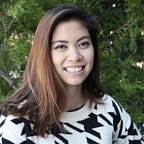Real or Fake?
Learn How Your Students Can Prepare to Operate Safely in a Digital World
If you spend just a few seconds to Google Search “New Techs in 2018” you’ll find new smart watches, virtual reality headsets, new models of the iPhone and Google Pixel phones, bluetooth connected light bulbs, smart glasses, GPS trackers, robotic home assistants, and the list goes on and on! The list continues to grow, the tech gets “smarter” and we are able to control and access information about almost anything at the tip of our fingers. How do we know which of these technologies are safe for us to use? How do we know if the information presented to us on the screens is factual? How do we know if images and videos we see are real?
There are no easy answers to these questions. However, it is our responsibility as educators to make sure that our students have the knowledge and skills (Digital Literacy) necessary to recognize digital threats and operate safely within the Cyber World. This focus on digital security for individuals as well as organizations has resulted in an entire career field called CyberSecurity. What exactly is CyberSecurity? Why is it important to all of us?
Have you ever received a text message, phone call, or email address from an unknown sender that looks like this image?
How do we know if this is real or not? Should we trust it because it says it comes from “Apple”? Should we click the link? Should we reply?
JASON Learning is committed to help our students build and apply the skills they need to navigate safely in the digital world. In Safety and Security in the Cyber World, our students explore the digital world and social engineering. They learn how to identify suspicious content, identify real articles vs scams or fake news, preventing yourself from being hacked or identity theft, and more.
This lesson is part of our newest curriculum, Think Digital, that is designed to build an understanding of computing and computer systems, networks and the internet, data collection and analysis, algorithms and programming, and the broader social and economic opportunities and impacts of computing. With Think Digital, students develop important career-ready skills, including software coding, data analysis, design and engineering thinking, scientific literacy, and effective communication; and engage in a learning journey where they encounter career-role models working in the digital world, and emulate the meaningful, exciting work they do through authentic, personal, hands-on activities.
We have a fun activity in the curriculum for students to identify what is real or what is a scam from multiple resources.
BuzzFeed has also created some fun Fake News Quizzes released weekly to test your knowledge on what is real news vs fake news. Take a look at some of them here — https://www.buzzfeed.com/tag/fake_news_quiz
